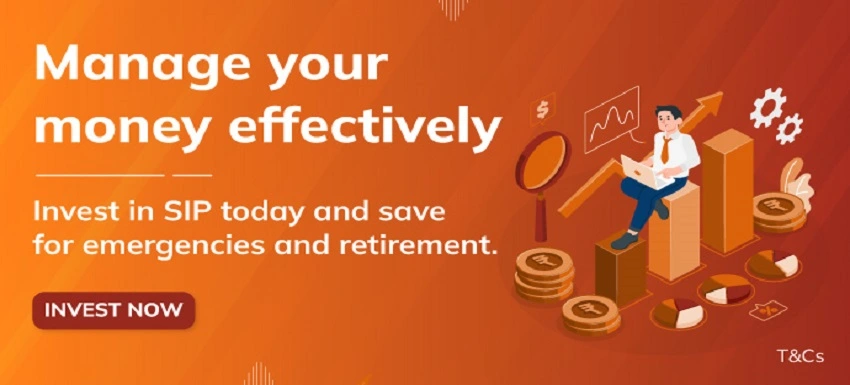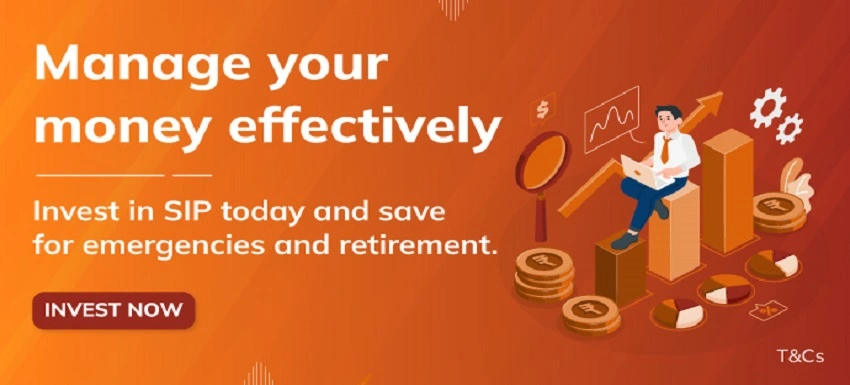THE
ORANGE
HUB
Expense Ratio: Meaning, Components & Formula

The expense ratio in Mutual Funds (MFs) is a critical metric that directly affects your returns. Simply put, it represents the percentage of your investment that goes towards the Asset Management Company (AMC) as a fee for managing your funds. While you do not pay this ratio separately, it is deducted daily from your investment value. Understanding the components of Mutual Fund Expense Ratio, its formula and impact, help make smart investment decisions.
What is Expense Ratio?
The Mutual Fund Expense Ratio is the cost you bear for managing your MFs, expressed as a percentage of the daily investment value. For example, if you invest Rs 5000 with a 2% expense ratio, approximately 0.0054% will be deducted daily. While this might seem minimal, it accumulates impacting your returns over time.
Expense Ratio Formula: Breaking it down
Expense Ratio = Total expenses/Average Assets under Management (AUM)
Where,
Total expense: The costs incurred by the AMC mentioned above, like fund manager’s fee, marketing and distribution expenses, legal/audit costs
Average AUM: The total value of all investors’ money in that fund
Recognising that the Average AUM includes the total value of all investors' money in the fund is essential. The formula becomes a helpful factor in determining how the costs incurred by the AMC impact the fund's overall performance.
Let’s take an example to get a better understanding. If an Equity MF manages AUM of Rs 700 crore and incurs Rs 14 crore in expenses, the expense ratio is 2%. This means 2% of the total fund value is used to cover operational costs.
Components of Expense Ratio
Expense ratios comprise various costs, each playing a unique role in the fund's operation and management.
Fund Manager's Fee
Actively managed funds involve higher fund manager fees compared to passively managed ones. Acknowledging that the fund manager's decisions significantly influence the fund's performance is crucial. Actively managed funds with higher expense ratios often justify these costs by aiming for superior returns through the manager's expertise.
Legal/Audit Fee
To comply with regulations, MFs incur costs for legal checks, audits and related processes. Understanding the legal and audit components, throws light on the regulatory framework within which MFs operate. These costs contribute to the overall expense ratio, ensuring compliance and transparency.
Marketing/Distribution Fee
Marketing, awareness creation and distribution costs influence the expense ratio. Due to lower intermediary costs, direct funds are often more cost-effective than regular funds. Recognising that these costs influence how the fund reaches investors is essential. This section is critical for investors to understand the dynamics of cost distribution within different fund types.
Expense Ratio Limits set by SEBI
The Securities and Exchange Board of India (SEBI) has set expense ratio limits based on the type of fund and it’s AUM.
For actively managed MFs:
Assets Under Management in crores |
Total Expense Ratio limit for equity schemes |
Total Expense Ratio limit for ‘other than equity’ schemes |
Rs 0-500 |
2.25% |
2.00% |
Rs 501-750 |
2.00% |
1.75% |
Rs 751-2,000 |
1.75% |
1.5% |
Rs 2,001-5,000 |
1.6% |
1.35% |
Rs 5,001-10,000 |
1.5% |
1.25% |
Rs 10,001-50,000 |
0.05% total expense ratio reduces with every increase of Rs <5,000> crore of daily net assets |
0.05% total expense ratio reduces with every increase of Rs <5,000> crore of daily net assets |
Remaining assets |
1.5% |
0.80% |
For passively managed MFs:
Scheme |
Maximum Total Expense Ratio |
Close-ended equity oriented or interval schemes |
1.25% |
Other than close-ended equity oriented schemes |
1.00% |
Exchange-Traded Funds (ETFs)/Index Funds |
1.00% |
Fund of funds (FoFs) - actively managed equity |
2.25% |
Fund of funds (FoFs) - actively managed other than equity |
2.00% |
Fund of funds (FoFs) - invest in Liquid Funds, Index Funds or ETFs |
1.00% |
These limits serve as benchmarks, ensuring that funds adhere to industry standards and provide investors with a clear understanding of what to expect from different fund categories.
Understanding the expense ratio is crucial for investors
Impact on Returns
Higher expense ratios result in lower returns. However, a lower ratio does not guarantee superior performance. Balancing cost-effectiveness with fund objectives is key. When it comes to impact on returns, investors should recognise the delicate balance between cost and performance. A thorough understanding of how expense ratios affect returns, provides clarity when assessing fund suitability.
Regular vs Direct Funds
Regular funds, distributed through intermediaries, have higher expense ratios than direct funds. They impact long-term returns, emphasising the cost advantage of direct investments. Investors should delve into the dynamics of distribution costs. With lower expense ratios, direct funds empower investors to make more informed and cost-effective choices.
Comparison Tool
Expense ratios aid in comparing MFs and choosing between similar funds. A lower expense ratio often signifies a more cost-effective option. Investors should recognise them as one of many metrics. While a lower ratio is generally favourable, a comprehensive evaluation includes other factors such as risk, past performance and fund manager expertise.
Key takeaways and things to remember
The expense ratio is the cost you pay for fund management, deducted daily from your investment. Investors should learn the ongoing nature of the expense ratio deduction. Recognising that it is part of the daily investment dynamics, helps investors plan and manage expectations.
A lower expense ratio is favourable, but align it with your investment objectives. Investors should consider cost alignment with their investment goals. While a lower ratio is generally beneficial, it is essential to maintain cost-effectiveness for the fund's ability to meet objectives.
The expense ratio of regular plans is higher than that of direct plans and the expense ratio of actively managed funds is higher than that of passively managed. Investors should delve into the details of different fund types. Understanding the dynamics between expense ratios and distribution channels empowers investors to choose funds that align with their preferences and cost considerations.
It has a higher impact on debt funds because the returns from these funds are relatively lower. Deducting the expense ratio from the returns can make them ill equipped to beat inflation. Investors should recognise the specific challenges that expense ratios pose for these funds. The delicate balance between cost and returns becomes even more crucial in debt investments.
You can use the expense ratio to compare MFs. Investors should integrate this metric into a comprehensive evaluation framework. A thorough approach involves considering multiple factors to make well informed investment decisions.
Expense Ratio is deducted from your investment amount daily and is not paid separately to the AMC. Investors should understand the seamless integration of the expense ratio into the investment process. This awareness ensures that investors are well informed about the ongoing cost dynamics of their MF investments.
A fund with a higher AUM is likely to have a lower expense ratio because the management costs are getting distributed among more investors, hence a fund with a lower AUM. Investors should grasp the economies of scale at play.
Conclusion
Comprehending the details of the Mutual Fund Expense Ratio is essential for investors seeking optimal returns and cost-effective investments. By being aware of its components, formula and impact, you can better understand the MF landscape and make investment decisions that are well informed and aligned with your financial goals.
Scroll to top



